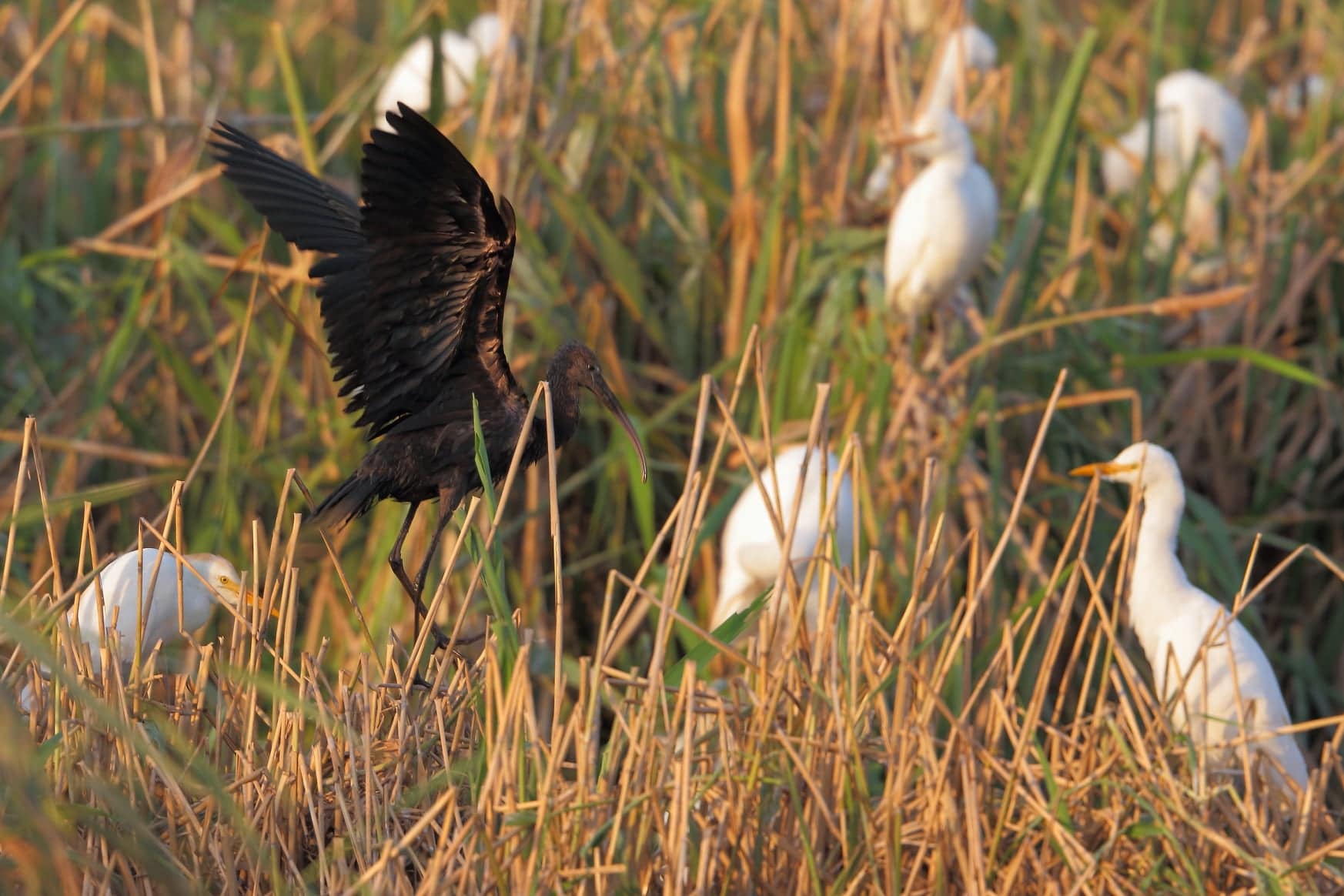Endangered Landscapes Programme announces $31 million investment in eight landscape restoration projects

With a helping hand, restoring nature across our planet is entirely possible. From mountains to oceans, forests to wetlands, when exploitative activities end and barriers to recovery are removed, degraded landscapes can recover – providing benefits for both nature and people.
Today, the Endangered Landscapes Programme announced a massive investment in eight new mega land- and seascape-scale projects. Many BirdLife Partners are involved in these projects and over the next five years will help restore large areas, especially Eurasian steppe and forest. Our BirdLife Partners from Bulgaria, Georgia, the United Kingdom and Ukraine are working on the following projects:
From Iron Curtain to Green Belt: restoring ecological networks in Southeast Bulgaria
The formerly closed international border between Turkey and Bulgaria extends from the Rhodope Mountains in the West to the Black Sea in the East. This part of southeast Bulgaria is one of Europe’s biodiversity hotspots, hosting 81 IUCN Red List species that are globally threatened. It is a stronghold for jackals and wolves, and breeding populations of the Eastern Imperial Eagle (Aquila heliaca), and an important site for globally threatened migratory species such as the Greater Spotted Eagle (Clanga clanga) and the Red-footed Falcon (Falco vespertinus). However, the area is facing numerous threats including grassland conversion for agriculture and commercial forestry, leaving wildlife and local communities vulnerable to forest fires.
With funding from the ELP, through a project partnership led by BirdLife Partner the Bulgarian Society for the Protection of Birds we will address habitat fragmentation, by implementing a state-of-the-art programme of restoration actions. By restoring water sources, grasslands, natural deciduous, and riverine forests in the place of commercial conifer plantations, the project will begin the creation of a vast 810,000ha network of viable ecosystems that are resilient to climate change and rich in biodiversity.
The Kakheti steppes: balancing between a living landscape or a future desert
The Eurasian steppes can be considered the savannahs of the temperate Northern hemisphere. With the vast plateau between the Iori and Alazani Rivers covered by steppes and semi-arid light forests, it is one of the four “islands” in the Caucasus eco-region where the endangered Caucasian Leopard (Panthera pardus tulliana) survived into the 21st century. This plateau is the key habitat corridor to reconnect the leopard populations of the Greater and the Lesser Caucasus, but restoring the natural prey of ungulates depends on the balance between wildlife, livestock grazing and controlling poaching.
Livestock grazing determines the rise or demise of biodiversity in these steppe landscapes. Previously, ELP funded experimental rotational grazing in the Chachuna reserve with promising results. Following that experience, together with our Georgian BirdLife Partner SABUKO, we will scale up grassland restoration to 25,000 ha. Working alongside semi-nomadic shepherds and protected areas managers we will reconnect habitats and wildlife corridors essential for the elusive Caucasian Leopard on more than 2,000km2 of the landscape.
Saving the Black Sea Steppe Pearl Necklace
One of the largest remaining steppe complexes in Europe is located on Ukraine’s Black Sea coast between the Kinburn and Karadai peninsulas. Here, the forces of wind and sea have shaped a highly diverse landscape, consisting of sandy and saline steppes, coastal lagoons and barrier islands. Its exceptional biodiversity is illustrated by the Sandy Blind Mole-rat (Spalax arenarius), endemic to this area. However, the landscape’s steppes have undergone severe degradation from conversion to arable land, widespread planting of pine trees and the loss of native herbivores. With our Ukrainian BirdLife Partner USPB, we aim to restore the connectivity, ecological functioning and species richness of this landscape through active restoration measures, strengthening of legal protections and the establishment of self-sustaining grazing regimes. By demonstrating how humans and wildlife can co-exist through the development of new environmentally sustainable commercial activities, and strengthen awareness of the ecological and economic value of steppes, we aim to leverage even further support for its restoration.
Due to the ongoing conflict in Ukraine, this project has been put on hold pending a significant improvement in the situation on the ground.
Reconnecting Cumbria
In the southwest of England, on the border to Scotland, Cumbria’s mountains once flourished with upland heath, alpine meadow, ancient woodland and fens. But monocultures have impacted the area badly, leaving rivers polluted and fells denuded. Now farmers and communities are working together to do their best to help nature thrive once again – as well as produce food. Through Reconnecting Cumbria, our UK Partner, the RSPB will work with and support those whose livelihoods derive from the landscape, and their local communities, to better determine a prosperous future of their choosing. Land-based livelihoods will be sustained, new jobs, apprenticeships, volunteering and training opportunities will be created. Through engagement and activities, people will have opportunities to connect with their landscape. By bringing together different actors and the community, we can work towards securing a more diverse, climate-resilient landscape that will be better placed to sustain livelihoods and vibrant communities in the longer term.
The Endangered Landscapes Programme is managed by the Cambridge Conservation Initiative, with generous support from Arcadia – a charitable fund of Lisbet Rausing and Peter Baldwin.
The projects described above have been given in-principle approval and are now in the final stage of design. If successful, they will start in autumn 2022.
Image: Eastern Imperial Eagle (Aquila heliaca) by S. Spasov
You might also be interested in:
 | Stichting BirdLife Europe gratefully acknowledges financial support from the European Commission. All content and opinions expressed on these pages are solely those of Stichting BirdLife Europe. The European Commission is not responsible for any use that may be made of the information it contains. |









